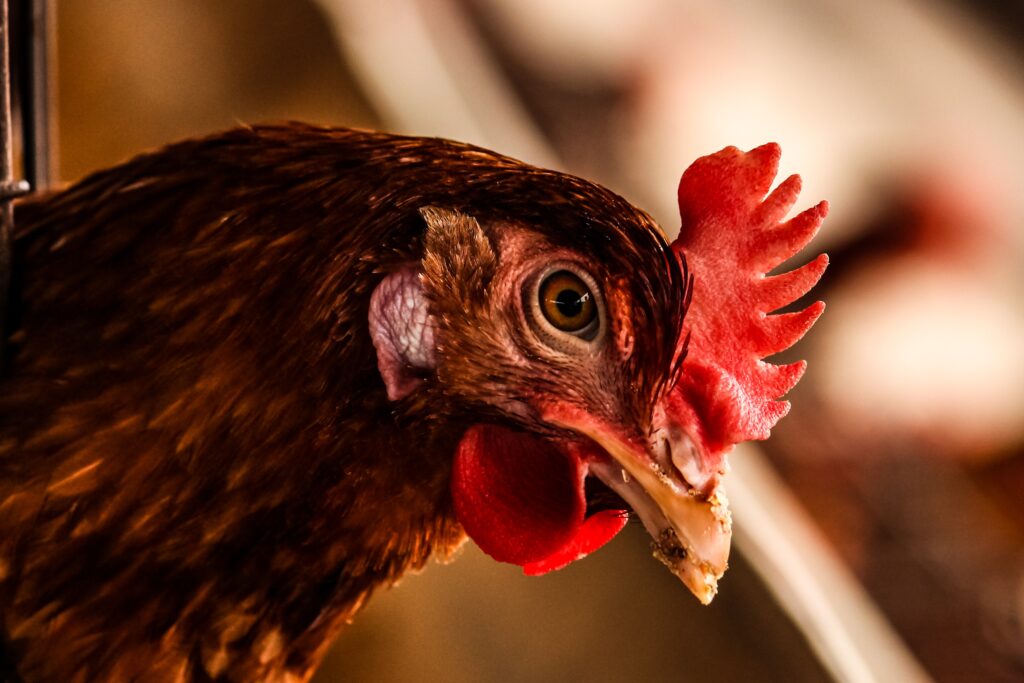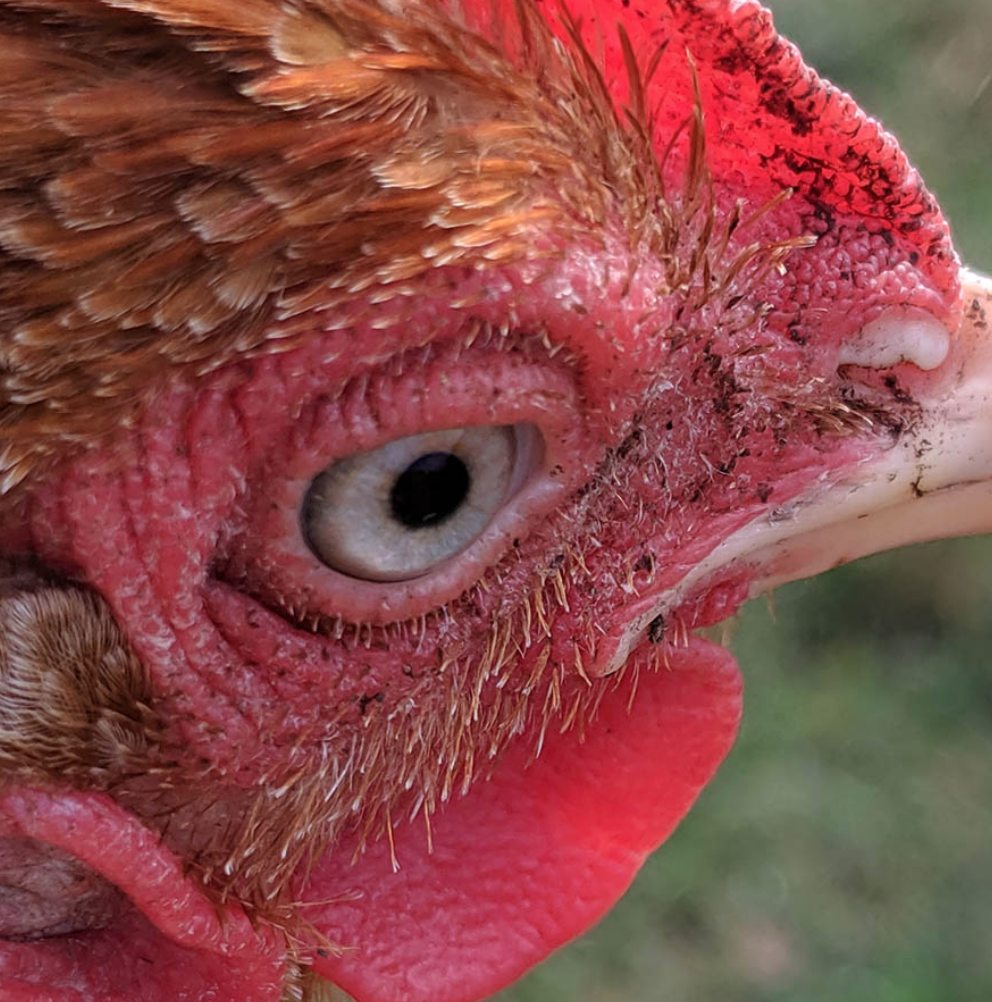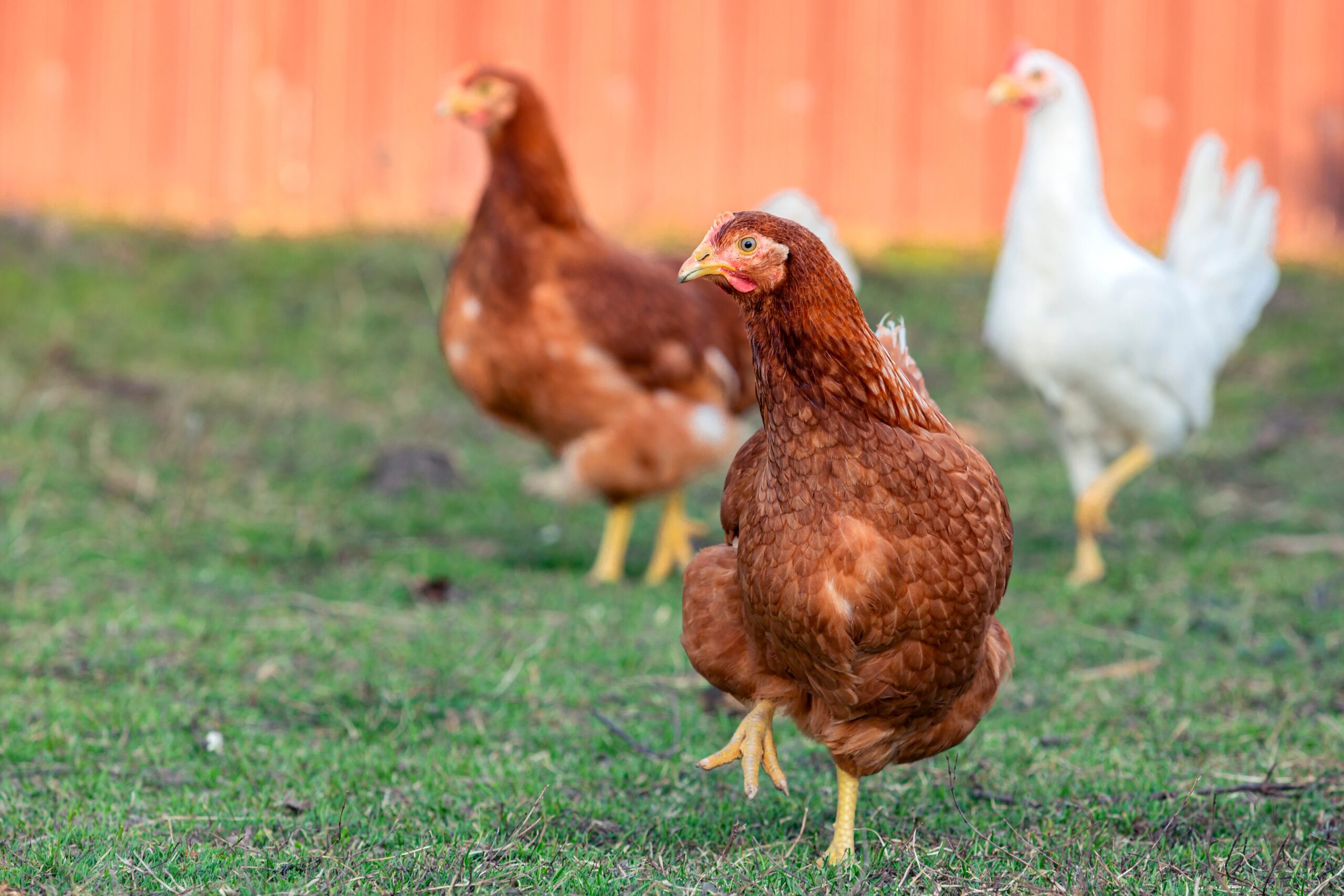Written by: Bria Osborne, OVC 2026
Edited by: Dr. Paisley Canning
Marek’s disease is a common small flock poultry disease. It has many different forms and can affect various systems of the body.
Like humans and other animals, chickens have something called a tumor suppressing gene. Its job is to help stop the growth of tumors. Marek’s disease acts by switching off this gene and therefore causes excessive tumor growth in affected chickens.
Marek’s disease also hinders the body’s ability to make antibodies. With a low number of antibodies, chickens with Marek’s disease run the risk of picking up other secondary infections such as coccidiosis and E.coli respiratory infections.
Marek’s disease is a herpes virus. Being a part of the herpes virus family means that Marek’s disease has a few typical traits. Marek’s has a latent form, meaning chickens can be infected and spread disease without having clinical signs. Marek’s is highly contagious from bird to bird. Once a bird is infected with Marek’s disease, it is infected for life.
Mareks can affect multiple body systems, the most common forms we see are organ tumors, eye, and nerve forms. In addition, Marek’s also exists in multiple strains that range from mild (minimal clinical disease) to serious (causes very serious and fatal disease).
Some of the most common forms of Marek’s disease
- Organ tumor form can cause decreased function of those organs
- Ocular (eye) form can cause blindness in one or both eyes
- Nerve form can cause neurological signs, including paralysis of the neck, wing, or leg (see figure 1 for an example of how neurological Marek’s may present)

Photo Credit: Dr. Jaime Ruiz, Cornell University
Figure 1: This is an example of a common posture that chickens with neurological Marek’s may exhibit. Note the outstretched leg.
Common Signs of Marek’s disease
The following are some common signs of Marek’s disease. Your chicken may experience one symptom or multiple symptoms of Marek’s disease.
- Rapid weight loss
- Greenish diarrhea
- Lack of coordination
- Muscle spasms
- Progressive paralysis of the leg, wing, or neck
- Enlarged crop
- Gasping
- Paleness
- Blindness in one or both eyes
- Shrunken iris that looks gray in colour. Figure 2 demonstrates a normal looking chicken eye and Figure 3 demonstrates a chicken with ocular Mareks.
- Irregularly shaped pupil
- Death

Figure 2: This is what a normal chicken eye should look like.

Photo credit: Cornell University
Figure 3: This is an example of what ocular Marek’s may look like. Note the grey looking iris.
Clinical disease is typically seen between 6-30 weeks of age, however birds of any age can experience clinical signs of Marek’s disease.
How is Marek’s disease spread?
Marek’s is spread by chicken dander. The virus has very good survivability in the environment, being able to live for months to years in the coop even after chickens have left.
Humans cannot get infected with the Marek’s virus, however, they can carry the infected dander on clothes, hands, skin, hair, and shoes. Therefore, biosecurity is very important. Refer to our blog ” Disease prevention and management basics for poultry and waterfowl” ( https://upperthamesvs.ca/updates/disease-prevention-and-management-basics-for-poultry-and-waterfowl/(opens in a new tab)) for biosecurity tips.
Is Marek’s disease treatable?
There is, unfortunately, no treatment for Marek’s disease currently. The best way to deal with Marek’s disease in your flock is by preventing it through vaccination.
Marek’s disease prevention: Vaccination
The best way to prevent Marek’s disease is through vaccination. Chicks need to be vaccinated before they ever encounter the virus. The most ideal time to vaccinate chicks is in ovo (in the egg) at day 18 of incubation or day 1 of hatch. The best way to ensure proper vaccination of birds is to purchase through an accredited hatchery that offers vaccinated chicks.
The Marek’s vaccine does not protect against infection, but rather the clinical signs associated with the disease. This means that vaccinated chickens can still contract and spread Marek’s disease, but they are less likely to develop the conditions associated with a Marek’s infection.
The vaccination is very effective, and we HIGHLY recommend that you vaccinate all your birds for Marek’s.
It is important to note that depending on the Marek’s strain, when the birds are vaccinated and quality control during vaccination, that the Marek’s vaccine may not provide complete protection in all circumstances.
Why don’t more people vaccinate for Marek’s Disease?
Many chicken owners may not be aware of Marek’s disease, the threat it poses, or that a vaccine protocol is associated with it.
The nature of the disease and the vaccine itself can also act as a barrier for small flock owners. Other than buying from an accredited hatchery, it can prove to be rather difficult for small flock owners to get their chickens vaccinated, especially if they have an established flock of adult birds. The Marek’s vaccine comes with thousands of doses for a high price and must be kept in liquid nitrogen until it gets reconstituted. The vaccine only lasts for around 2 hours after it has been reconstituted making it difficult for veterinarians and producers to have on hand. Vaccination of adult birds is possible, but it is not as effective as vaccinating a day-old chick as the adult bird has probably already been exposed to Marek’s disease.
How do I know if my chicken is positive for Marek’s disease?
Having a good working relationship with your vet will help them determine if your chicken or flock is having a Marek’s issue. Most backyard flocks will have Marek’s present in their flocks (but not all have the most virulent strains). Your vet will work through your flock’s history, any clinical signs, and may also pull blood to run a Marek’s blood test.
If you suspect your chicken has Marek’s disease or want more information about the disease and how to prevent it, contact Dr. Canning. You can contact the clinic at [email protected], or on facebook.com/upperthamesvs.
References:
https://www.merckvetmanual.com/poultry/neoplasms/marek-s-disease-in-poultry
https://extension.psu.edu/mareks-disease-in-chickens
The Chicken Health Handbook by Gail Damerow
WeCAHN and CAHSS small flock poultry course (May 2023)

